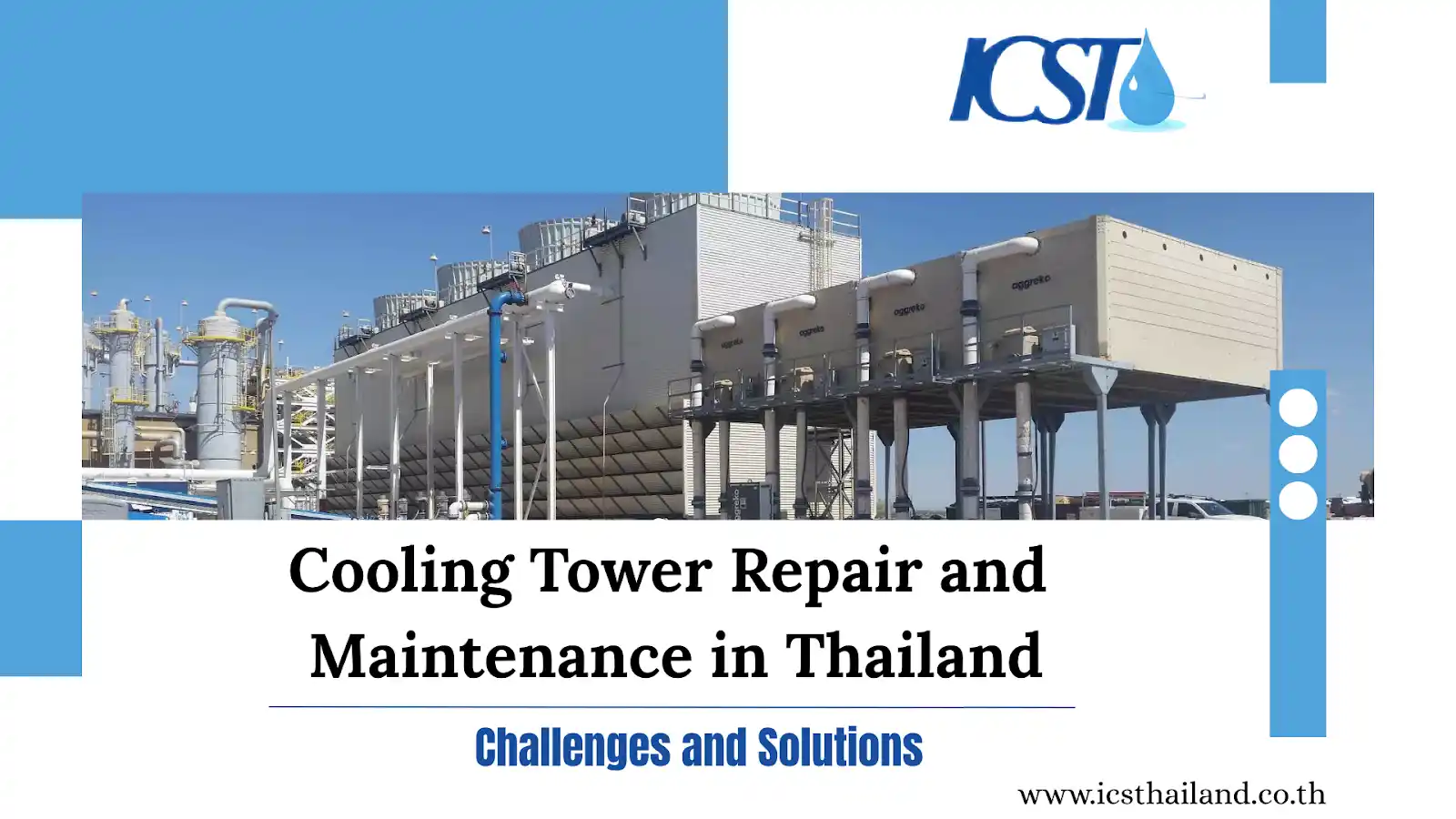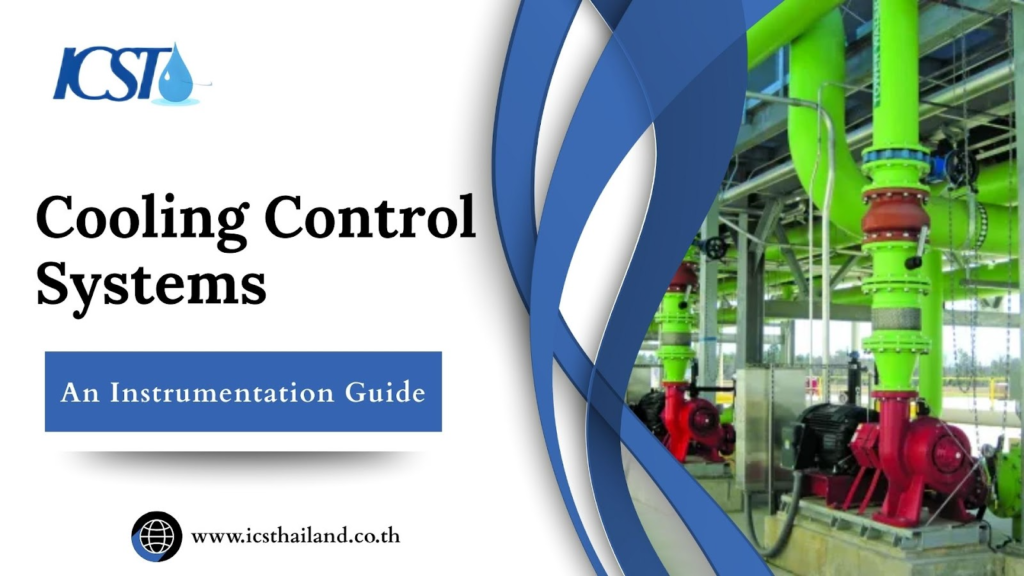As someone deeply involved in Thailand’s industrial sector, I’ve seen just how crucial efficient cooling systems are for keeping things running smoothly. Be it in factories, energy production sites, or large-scale commercial structures. Cooling towers are the unsung heroes here, quietly working to remove excess heat and ensure equipment operates at its best.
But let’s be real: Thailand’s tropical climate and unique environmental conditions don’t make it easy. That’s why cooling tower repair and maintenance in Thailand isn’t just a routine task, it’s a specialized art that demands expertise tailored to the challenges we face. Maintaining these systems at peak performance is essential for minimizing downtime and staying competitive in this challenging landscape.
This comprehensive guide explores the critical challenges facing cooling tower operations in Thailand and provides proven solutions to maximize efficiency, reduce downtime, and extend equipment lifespan.
Table of Contents
ToggleThe Vital Role of Cooling Towers in Thailand’s Industries
Thailand’s manufacturing and industrial sectors generate substantial heat during operations. Cooling towers provide essential heat rejection, maintaining safe operating temperatures for equipment and processes. Without proper cooling, industrial facilities face equipment failures, reduced productivity, and costly shutdowns.
Challenges of Thailand’s Tropical Climate for Cooling Towers:
- High humidity levels accelerate wear and tear.
- Year-round elevated temperatures promote biological growth.
- Seasonal monsoons create challenging maintenance conditions.
Why Efficient Maintenance Matters:
- Reduces energy costs by up to 25% for industrial facilities.
- Minimizes unexpected breakdowns, improving reliability.
- Ensures compliance with regulatory standards.
Key Takeaways:
- Specialized maintenance strategies are essential for tropical climates.
- Proper programs directly impact operational efficiency and sustainability..
Navigating the Unique Challenges of Cooling Tower Maintenance in Thailand
The Battle Against Corrosion: Thailand’s Humid Climate Impact
Thailand’s consistently high humidity levels create aggressive corrosion conditions for cooling tower components. The combination of moisture, heat, and atmospheric pollutants accelerates metal deterioration at rates far exceeding those in drier climates.
Common corrosion points include structural supports, heat exchange surfaces, and water distribution systems. Steel components experience rapid rust formation, while aluminum and copper materials suffer from pitting and galvanic corrosion. These issues compromise structural integrity and reduce heat transfer efficiency.
The long-term effects of unchecked corrosion include:
- Structural failure of support systems
- Reduced heat transfer capacity
- Increased maintenance costs
- Potential safety hazards for personnel
- Shortened equipment lifespan
Scaling and Fouling: A Persistent Problem from Water Quality
The mineral content and characteristics of local water sources directly influence scaling severity and fouling rates.
Industrial water in Thailand is frequently characterized by elevated concentrations of calcium, magnesium, and various dissolved solids. These minerals form scale deposits on heat exchanger surfaces, which decrease thermal efficiency and hinder water flow.
Organic matter in water sources promotes biological fouling, creating additional performance barriers.
Scale formation patterns vary by region:
- Bangkok area: High dissolved solids from urban runoff
- Eastern seaboard: Elevated salt content from coastal proximity
- Northern regions: Seasonal variations in mineral content
- Industrial zones: Chemical contamination from nearby facilities
Biological Contamination: A Threat in Tropical Environments
Warm, moist conditions in Thailand create ideal breeding grounds for harmful microorganisms. Cooling towers create conditions that are highly conducive to the growth of algae, bacteria, and Legionella. This can result in serious health risks and operational difficulties.
Biological growth impacts system performance by clogging distribution nozzles, reducing heat transfer efficiency, and creating corrosive biofilms. More critically, Legionella bacteria can cause severe respiratory illness among facility personnel and nearby communities.
Key biological threats include:
- Algae growth blocking sunlight and oxygen transfer
- Bacterial biofilms accelerating corrosion rates
- Legionella pneumophila requiring strict control measures
- Fungal growth degrading organic components
Mechanical Wear and Tear: The Demands of Continuous Operation
Thailand’s industrial facilities often operate cooling towers continuously due to consistent heat loads. This constant operation places enormous stress on mechanical components, accelerating wear patterns and increasing failure rates.
Fan systems experience bearing failures, blade imbalances, and motor burnouts. Gearboxes suffer from lubricant degradation and seal failures in humid conditions.
Critical mechanical issues include:
- Motor overheating from ambient temperature stress
- Bearing failures from moisture infiltration
- Gearbox oil contamination reducing lubrication effectiveness
- Structural vibrations from component imbalances
Energy Inefficiency and Downtime: Hidden Costs of Neglect
How do maintenance issues translate into financial losses? Poor cooling tower performance forces systems to work harder, consuming more energy while delivering less cooling capacity.
Scaling reduces heat transfer efficiency by up to 40%, forcing pumps and fans to operate at higher speeds. Biological fouling restricts water flow, increasing pressure drops and energy consumption. Mechanical issues lead to vibrations and imbalances, causing energy loss and reducing the lifespan of components.
Financial impacts include:
- Increased electricity bills from reduced efficiency
- Production losses during unplanned shutdowns
- Emergency repair costs exceeding preventive maintenance
- Regulatory fines for environmental compliance failures
Strategic Solutions for Optimal Cooling Tower Performance in Thailand
Proactive Preventive Maintenance Programs
What makes an effective maintenance program for Thailand’s conditions? Successful programs combine regular inspections, scheduled servicing, and environmental monitoring tailored to local challenges.
Developing maintenance schedules requires understanding seasonal variations and operational demands. Monsoon seasons demand increased inspection frequency, while dry periods may require enhanced water treatment. High-use periods need more frequent mechanical checks.
Essential maintenance components include:
- Weekly water quality testing and treatment adjustments
- Monthly mechanical inspections of fans, motors, and drives
- Quarterly structural assessments for corrosion damage
- Semi-annual deep cleaning and component replacement
Advanced Water Treatment Solutions
Effective water treatment programs must address Thailand’s specific water quality challenges. Chemical treatment systems require customization based on local water sources and seasonal variations.
Scaling prevention involves carefully balanced inhibitor programs that prevent mineral precipitation without promoting corrosion. Biocide treatments must target local microorganisms while maintaining environmental compliance.
Treatment strategies include:
- Corrosion inhibitors designed for high-humidity environments
- Scale inhibitors matched to local water mineral content
- Biocides effective against tropical microorganisms
- pH adjustment systems maintaining optimal water chemistry
Component Upgrades and Replacements
When should facilities consider component upgrades? Aging equipment operating in Thailand’s harsh conditions often benefits from modern materials and design improvements.
Fiberglass reinforced plastic (FRP) components offer superior corrosion resistance compared to traditional materials. Specialized coatings protect metal surfaces from humidity and chemical exposure. Upgraded fan designs improve efficiency while reducing energy consumption.
Upgrade options include:
- Stainless steel or FRP structural components
- Corrosion-resistant heat exchanger materials
- Energy-efficient motor and drive systems
- Advanced water distribution designs
Embracing Technology
How can technology improve cooling tower maintenance? Smart sensors and monitoring tools deliver real-time insights into system performance, paving the way for effective predictive maintenance strategies..
Remote monitoring systems track water chemistry, temperature variations, and mechanical performance. Automated alerts notify maintenance teams of developing problems before they cause failures. Data analytics identify patterns that optimize maintenance scheduling.
Technology solutions include:
- Wireless sensors monitoring water quality parameters
- Vibration monitoring systems detecting mechanical issues
- Remote access capabilities for off-site monitoring
- Predictive analytics software optimizing maintenance timing
The Value of Expert Partnerships: Why Local Expertise Matters
Thailand’s unique industrial environment requires specialized knowledge and experience. Local service providers understand regional challenges and regulatory requirements that international companies may overlook.
Experienced partners provide customized solutions addressing specific facility needs. They maintain relationships with local suppliers and regulatory authorities, ensuring compliance and availability of parts and services. Learn more at Industrial Cooling Solutions Thailand.
Partnership benefits include:
- Rapid response times for emergency repairs
- Knowledge of local water quality variations
- Regulatory compliance expertise
- Cost-effective maintenance solutions
Conclusion
Proper Cooling Tower Repair and Maintenance is essential to tackle the unique challenges posed by the tropical industrial environment. We’ve explored the common hurdles – from relentless corrosion and pervasive scaling to the threats of biological growth, mechanical wear, and the hidden costs of energy inefficiency.
But for every challenge, there’s a robust solution. We’ve highlighted the power of proactive preventive maintenance, the necessity of advanced water treatment, and the smart investment in component upgrades and modern technology like predictive monitoring.
Most importantly, we’ve emphasized the invaluable role of partnering with local experts who understand Thailand’s specific conditions.
By tackling these points strategically, you do more than just overcome operational headaches. You unlock major benefits. Contact ICST today for a customized assessment. Discover how our expertise can keep your operations cool, efficient, and reliable for years to come.
Frequently Asked Questions
Why is cooling tower maintenance vital in Thailand?
Thailand’s climate accelerates corrosion, scaling, and biological growth. Regular maintenance prevents costly breakdowns, ensures efficiency, and extends tower lifespan in these challenging conditions.
Common cooling tower problems in Thailand?
Frequent issues include severe scaling, fouling from water quality, rapid corrosion from high humidity, and biological contamination like Legionella, all impacting performance.
How does Thai water quality affect towers?
Thailand’s water often contains impurities. This causes accelerated scaling, increased fouling, and promotes microbial growth, directly reducing tower efficiency and lifespan.
How to prevent cooling tower corrosion?
Use advanced water treatment, apply protective coatings, and conduct regular inspections. Corrosion-resistant materials also offer long-term protection against Thailand’s humidity.
How to cut cooling tower energy costs?
Proactive maintenance prevents inefficiency. Upgrading to energy-efficient components and using advanced monitoring systems significantly optimizes performance and lowers operational costs.








